10 Small Home Projects That Pay Off Big
The home-improvement boom shows no signs of slowing.
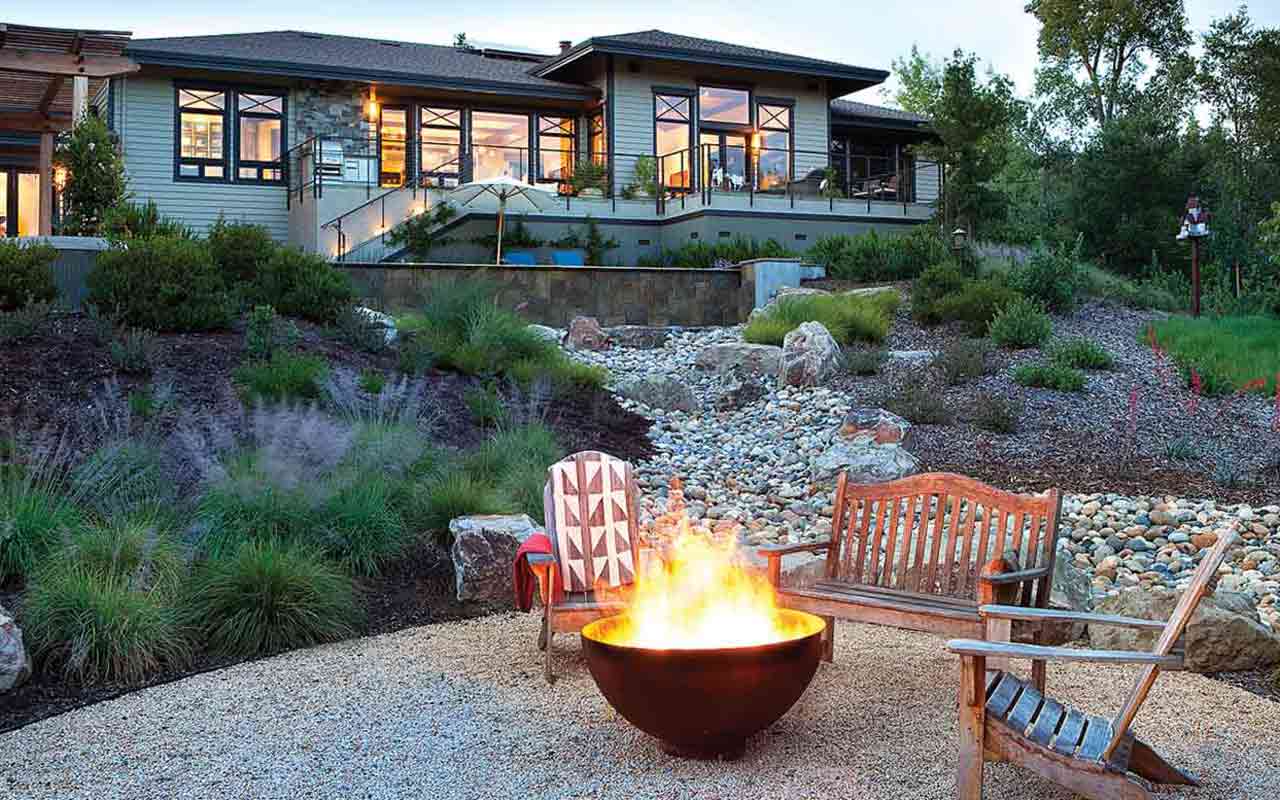

The home-improvement boom shows no signs of slowing. Half of homeowners recently polled by Houzz.com, a design and remodeling site, say they plan to start or continue renovations at a median cost of $10,000.
We’ve highlighted 10 small projects—most of which won’t cost more than $10,000—that can increase your enjoyment of your home in a big way. In most cases, you won’t recoup the full cost of the project when you sell, but it could help attract buyers when you put your home on the market.
Many of the projects come with kits and prefab components, so you can save money by doing the work yourself. The retailers we mention all ship within the continental U.S., and shipping can run from free to a few thousand dollars.
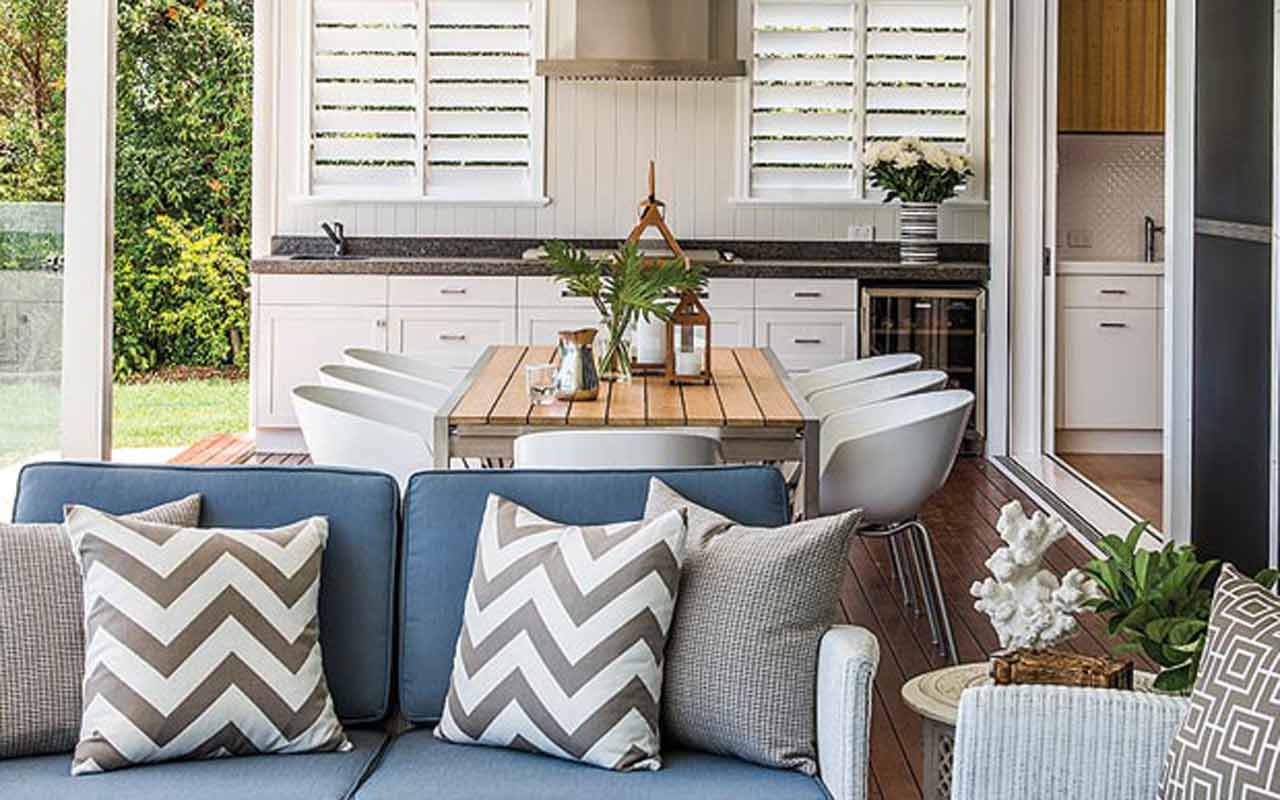
Cooking Alfresco
- Cost: $7,350 to $14,200
If you love to grill and entertain outside, an outdoor kitchen may be just the ticket.
The kitchen’s centerpiece is a gas grill, fueled by natural gas or propane, built into a weatherproof base. Other basic features include drawers for storage; a side burner for heating, sautéing or boiling; a compact refrigerator; and a roll-out or tilt-out trash bin. If you can locate the outdoor kitchen close to the indoor one, you can save money because you won’t have to install a sink.
A barbecue island is the least-expensive and easiest-to-install option, and it’s portable—a handy feature if you’re planning to move in a few years. For example, the Blaze LTE BBQ Island ($7,350 from BBQGuys, with free shipping plus an optional $299 fee for installation) comes with a four-burner gas grill, a side burner, a 24-inch refrigerator, and rustproof aluminum countertops and walls.
Or, by taking a modular approach—mixing and matching lightweight bases with individual appliances or a package of appliances—you can customize the size, layout and functionality of your kitchen to suit your needs and your budget. The modules, which can be joined together for a seamless look, may come with standard finishes such as tile countertops and stucco veneer, but you may be able to upgrade to granite countertops and a stone or brick veneer.
For easy assembly with a custom look, BBQ Guys sells modules that you can finish with any countertop and veneer material you like. For example, the DCS package of 10 appliances by Fisher & Paykel ($14,200) includes an infrared sear burner and outdoor beverage chiller, with bases and a rear overhang where you can serve food.
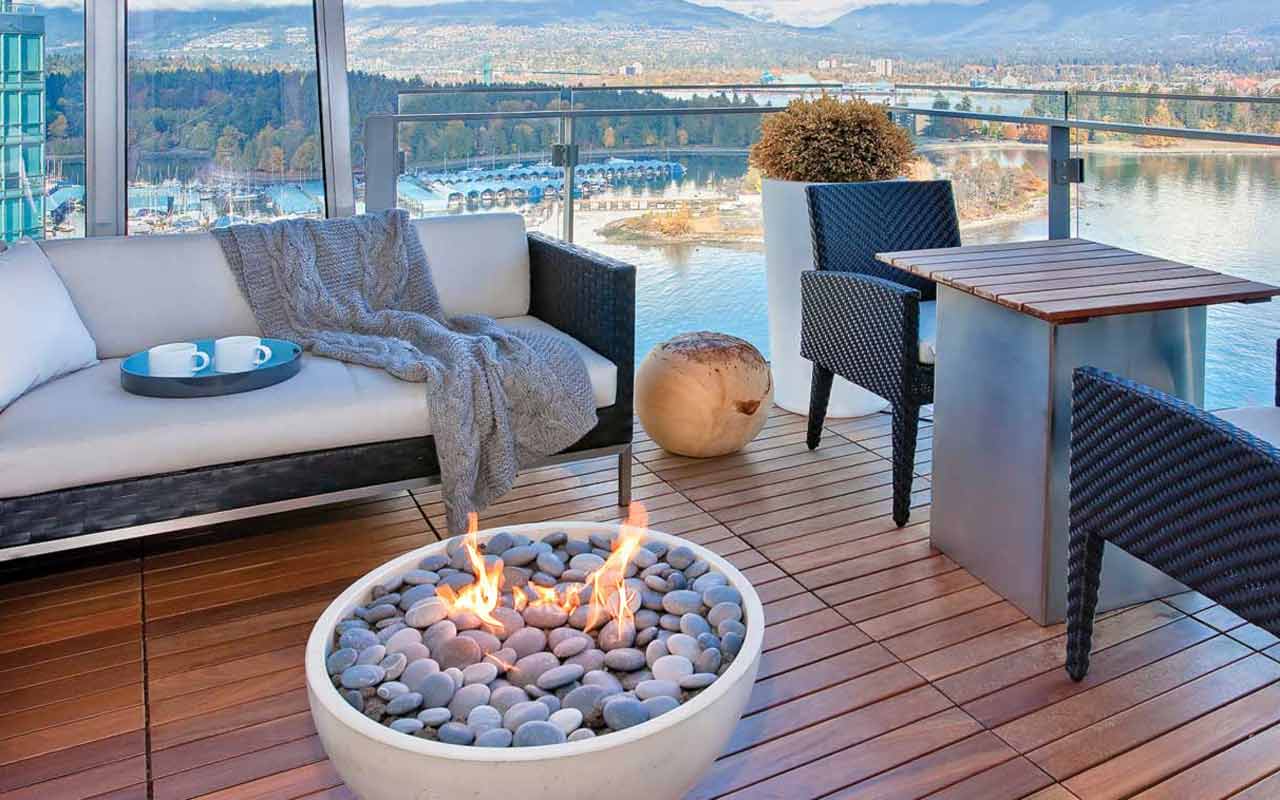
A Fire for All Seasons
- Cost: $149 to $3,995
A chill in the air doesn’t mean you have to take all activities indoors. You can extend your patio season with a fire pit. Portable fire pits come in a variety of materials, forms (such as bowls and tables) and styles, and you can burn wood or gas. You may be able to cook over a wood-burning fire pit, but some localities ban or restrict open wood fires. With propane or natural gas, you can turn the fire on or off with the twist of a knob and a lighter or the click of a remote. A gas fire is cleaner-burning than wood, and you won’t have smoke blowing in your face, but it won’t produce as much heat or the satisfying snap, crackle, pop of wood.
Propane in a portable tank requires refilling and, depending on the design of the fire pit, can be unsightly. If you use propane or natural gas in your home, you can have a gas line to your fire pit professionally installed, providing a constant fuel source.
To burn gas, you’ll need a fire-pit gas burner. Burners cost from $80 to $665 at ultimatepatio.com. A gas fire pit also needs lava rocks, glass beads, or ceramic or steel logs that break up and disperse the flame for a better visual effect. Look for inspiration and find dealers and installers at landscapingnetwork.com. For a sleek, modern design, see the Block Fire Pit ($1,700, by Ore Inc., sold by uniquegardendecor.com. If you want radiant warmth from your gas fire, consider the Alpine series of hand-forged steel logs from SteeLog Artistic Metals ($1,097 to $3,995, depending on size.
For do-it-yourselfers, a semi-permanent wood-burning fire pit built from stackable, precast concrete blocks with a steel liner ring is an easy project. Home Depot fire-pit kits sell for as little as $149 (precast blocks) up to $960 (granite blocks). Fire-ring burners are extra ($30 to $100, depending on size).
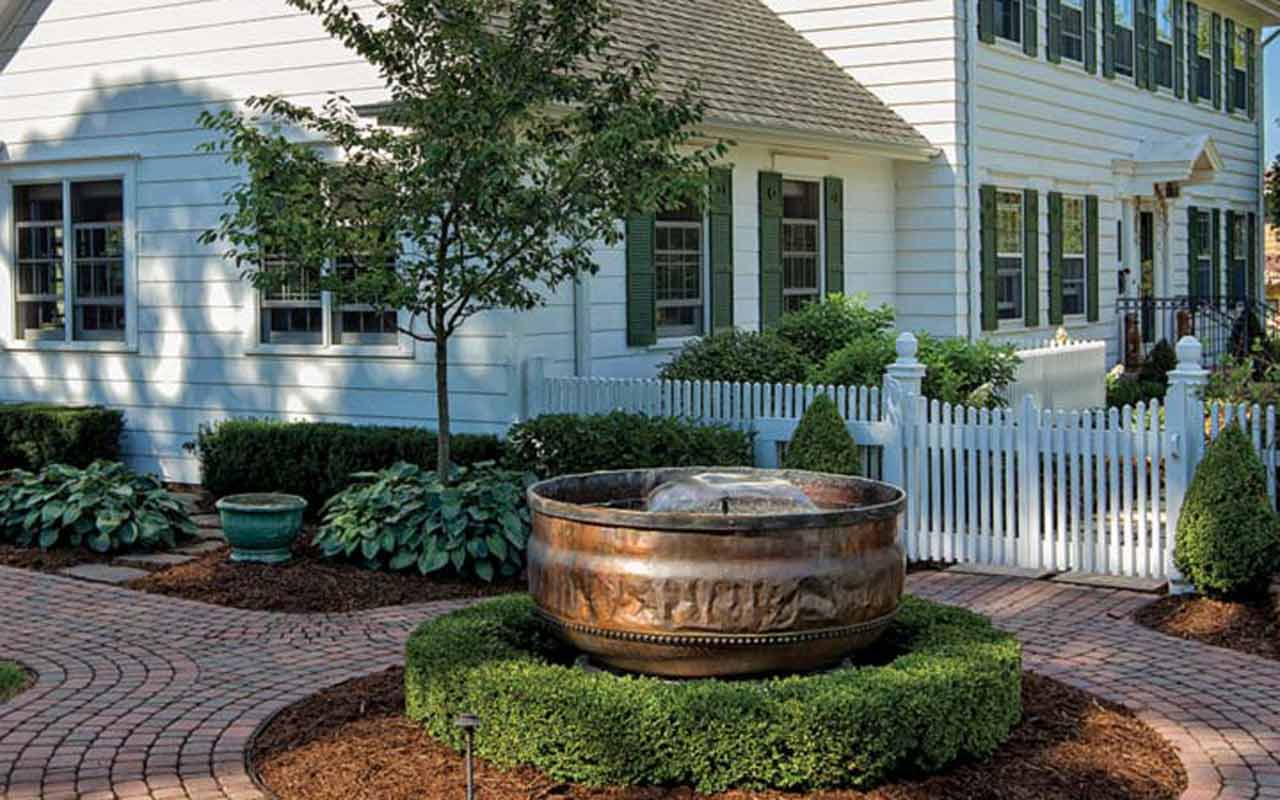
Backyard Waterfall
- Cost: $500 to $8,400
Adding a pond or other water feature to your yard can be aesthetically pleasing to the eye and ear.
A pondless waterfall—a series of ledges over which the water cascades into a concealed reservoir covered in stone—requires a leak-proof liner and rocks and landscaping for a natural look, and it may require digging or regrading to create its path or slope. The steeper the drop, the noisier the falling water, so consider that when locating and designing the feature. A pond can be as simple as a small pool with a bubbler or a large, self-contained ecosystem complete with fish. Ponds require the most maintenance.
A fountain that uses an electric pump to recirculate water from a basin hidden underneath is the simplest water feature to install. You will need to replenish the water periodically as it evaporates, and you can run the fountain on a timer to conserve electricity.
You can buy a fountain or a kit for a waterfall or pond at a patio or garden retailer and install it yourself, or you can hire a landscape contractor to design and install it for you. Blue Thumb, which manufactures and sells equipment, says that professional installation and materials for a fountain typically cost $1,000 to $8,000; a pondless waterfall costs $1,500 to $5,000, depending on the size and type of rocks; and a pond costs $2,500 to $7,500 or more. Blue Thumb also sells fountain kits online, from $500 for a bubbling granite sphere to $8,400 for three bubbling onyx columns. Its pondless waterfall kits sell for $550 to $2,800.
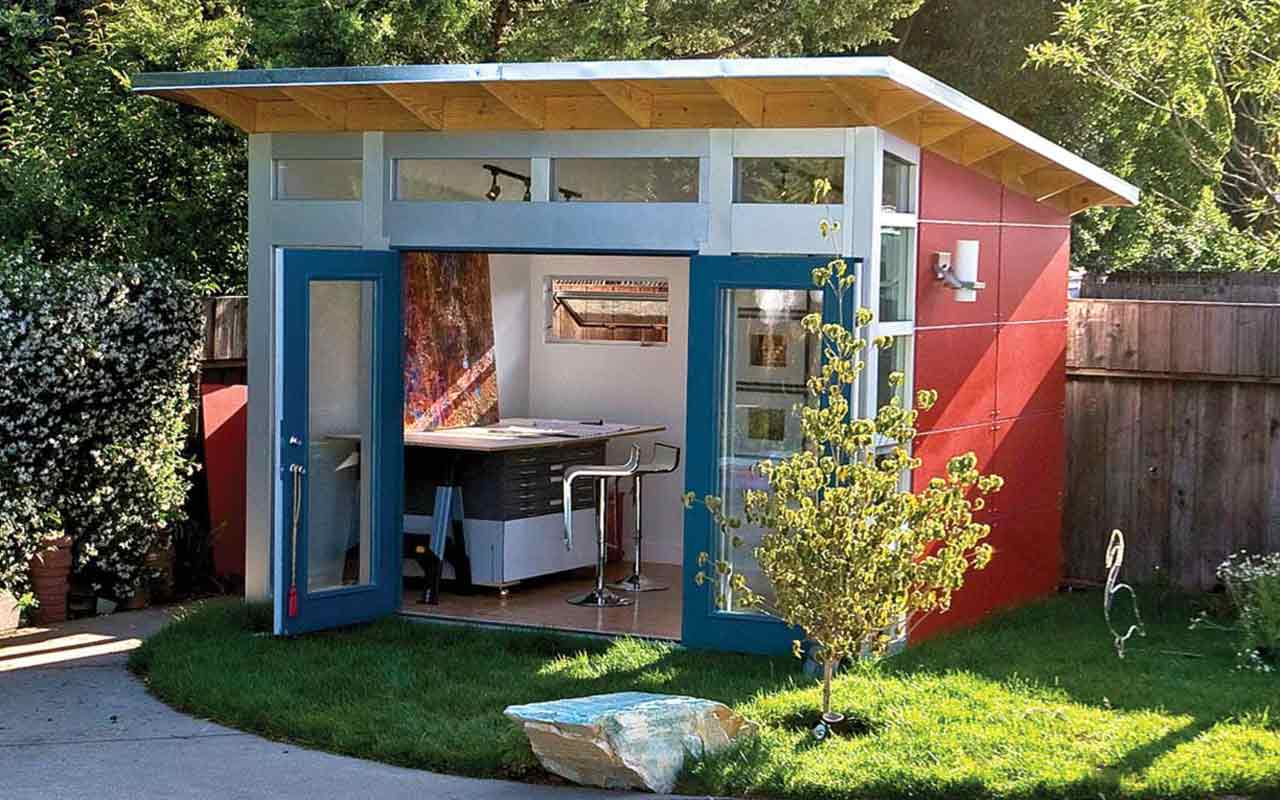
He- or She-Shed
- Cost: $2,100 to $19,235
Do you long to escape the hubbub of family life or your honey-do list so you can work, read, play music, do yoga or smoke a cigar in peace? Convert a shed (or buy one) to create your sanctuary.
First, a few caveats. In most of the U.S., outbuildings of less than 120 square feet don’t require a permit to install or build. But some municipalities restrict the size of outbuildings to 80 square feet, and others allow up to 200 square feet. If your “shed” is a fully functional tiny home where someone could live, it may be banned entirely. Be sure to locate your shed within the setbacks from property lines required by your city.
If you don’t have a shed you’d like to convert, you can buy a ready-made one from a local shed builder or a prefab kit from a home-improvement retailer. Lowe’s, for instance, sells kits for cottage-style sheds with windows for about $2,100 to $5,000, and installation can cost $3,000 to $4,000 more.
To make the shed fully functional, you’ll want to add insulation, air-conditioning and heating, ventilation, and electrical outlets. From Studio Shed, you can buy a nearly turnkey solution; its 8-by-10-foot Pagoda model has a base price of $10,255 but costs $16,735 with insulation, electrical outlets, finished floors and trim. Installation is extra. (On the website, use the “3D configurator” to design and price your shed.) Adding a ductless mini-split HVAC unit would cost about an extra $2,500.
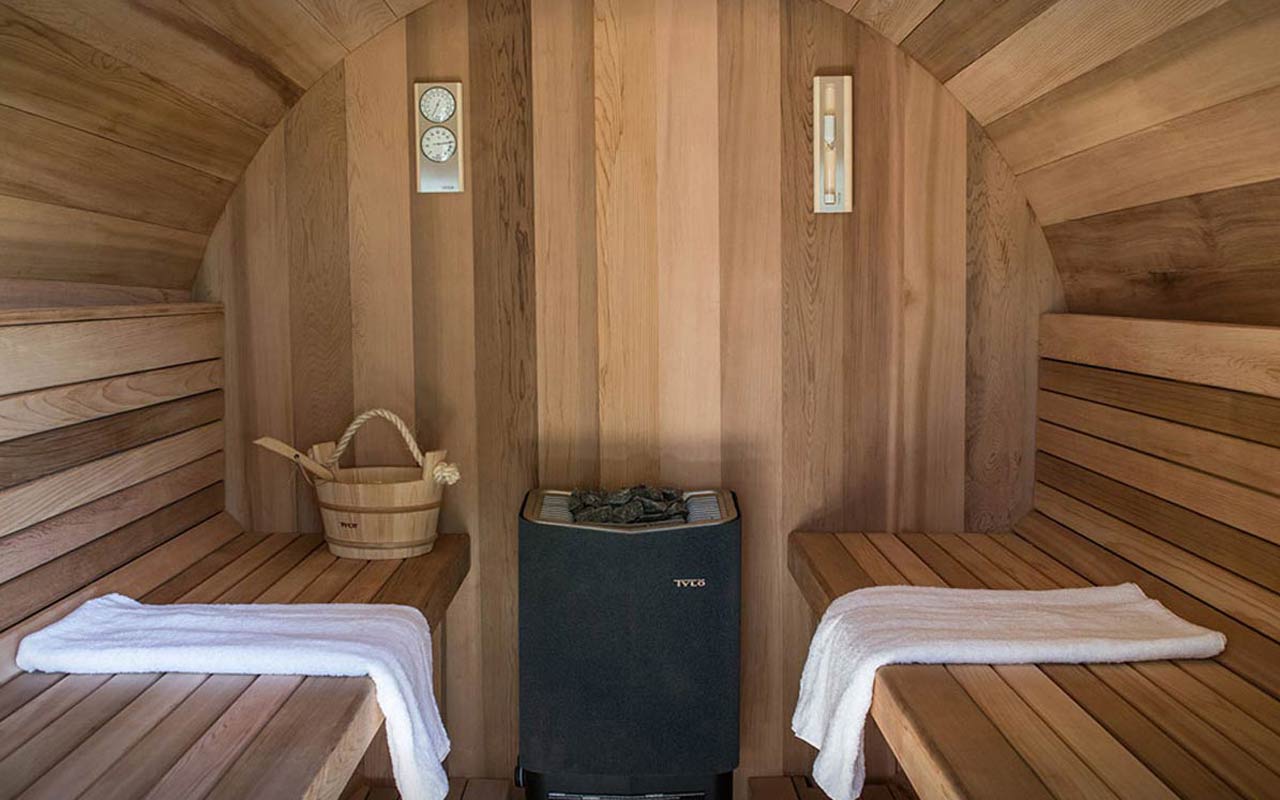
A Personal Sauna
- Cost: $4,000 to $15,500
A traditional sauna is a cedar-lined room heated by either a wood-burning or electric heater, usually with rocks that absorb and radiate the heat and produce steam when you throw water on them. Temperatures can reach more than 190 degrees. Wood-burning heaters can be controlled by managing the rate of burning; electric heaters have a temperature control and should have an automatic shut-off timer for safety. When designing or buying a sauna, think about how many people you want it to accommodate. Traditional saunas usually provide lower (cooler) and higher (warmer) benches.
If you want an old-school sauna for outdoor use, check out Christensen Saunas, in Duluth. The company builds saunas in four sizes, outfitted with wood-burning heaters, for $8,470 (for two to three adults) to $13,150 (for four or five adults or more).
Sauna manufacturer Almost Heaven sells kits for barrel-style outdoor saunas and compact indoor models, too. The kits provide all the necessary materials and instructions, with YouTube videos and customer service as backup. The company’s traditional saunas usually cost from $4,000 for a two-person, indoor model in spruce with a small electric heater up to $15,500 for a six-person, cabin-style outdoor model in spruce with a wood heater. The company periodically runs specials, when it heavily discounts select models. Plus, Costco members can save a few thousand dollars on a limited supply sold there.
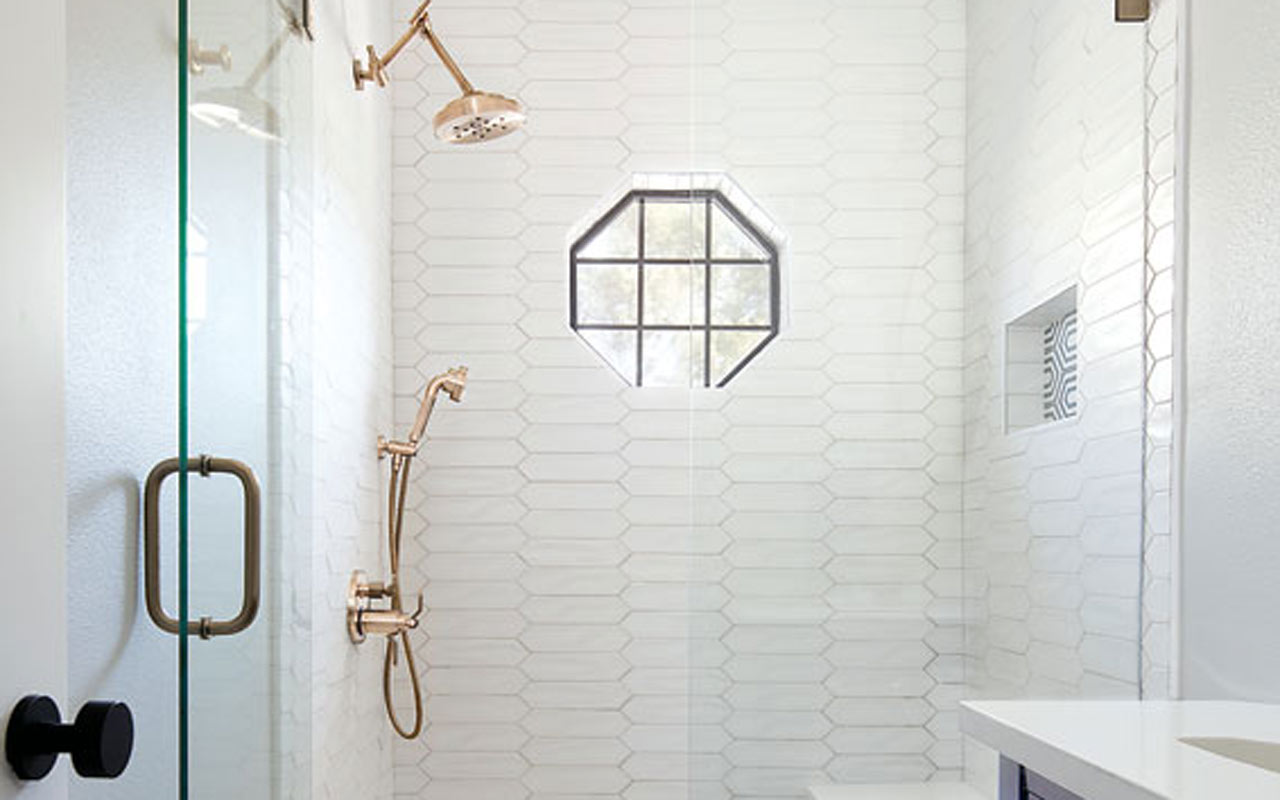
Get Steamed
- Cost: $4,460 to $15,000
A steam shower helps you relax without using a lot of water: 20 minutes consumes just 2 gallons, compared with 50 gallons in a conventional shower.
With the push of a button, a steam generator converts the water to steam, which quickly fills the shower enclosure via a steam head. Many systems offer add-ons for seating, special lighting, multiple shower heads, music and more. When you’re done, you can take a cooling shower in the same space.
You can buy a ready-made, self-contained “pod” that you can put anywhere, such as near your fitness room, or a prefab enclosure kit designed to replace a tub or shower, at Home Depot or Lowe’s. One option is the Steam Planet Deluxe Plus enclosure kit with generator ($4,460 at Home Depot; installation is extra).
Custom-built tiled steam showers are often installed as part of a bathroom remodel because the shower enclosure must be rebuilt from the wood framing out for extra waterproofing to avoid damage to your home. Plus, the shower ceiling should be reconstructed with a slope so that cooling water droplets will slide down and won’t fall on you when you’re nice and hot. Glass doors with a tilt-out transom at the top for ventilation complete the enclosure. This job would probably run $10,000 to $15,000.
In a prefab or custom job, the steam generator, basically a large box, is generally hidden in nearby cabinets or a closet. Look for a generator, such as Mr. Steam, that includes an auto-flushing feature to eliminate any buildup of stagnant water. Mr. Steam’s basic residential generator starts at about $1,500, according to Mosaic Tile, a Mr. Steam dealer in northern Virginia. Other manufacturers of steam generators include Steamist, Thermasol and Kohler. Check manufacturers’ websites for authorized dealers and installers.
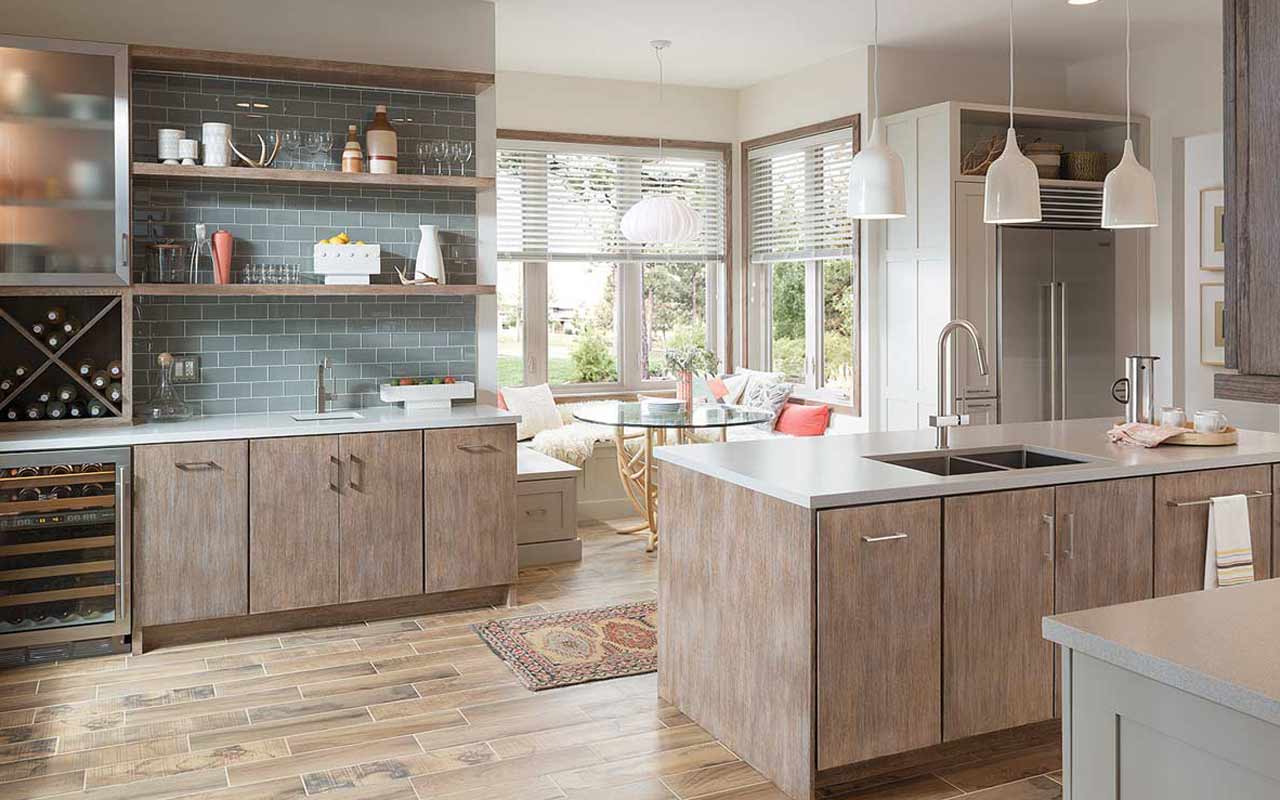
Kitchen Tune-Up
- Cost: $6,500 to $11,00
When kitchen finishes start to look tired, it may be time for a face-lift.
If your cabinets are structurally sound but the door style is dated or the finish is worn, consider “refacing” your cabinets by replacing the doors, drawer fronts, hinges and handles, and applying matching veneer to the cabinet boxes. HomeAdvisor.com says refacing generally costs about half the price of replacing cabinets. For example, Cabinetpak in Seattle can reface a standard 10-by-10-foot, L-shaped or galley kitchen for $9,000 to $11,000.
Doors finished in molded plastic (thermofoil) or laminate are the cheapest; wood veneer or solid wood are the most expensive. Simple door styles are popular, as are white-and-gray color palettes, according to the National Kitchen and Bath Association (NKBA). Get estimates from home-improvement retailers and from smaller kitchen remodelers.
Replacing counters, the sink and faucet and installing a tile backsplash can also freshen a kitchen. Quartz (about $50 to $100 per square foot) has overtaken granite (about $40 to $60 per square foot) as the most-sought-after countertop material, and white subway tile is a popular backsplash material, according to the NKBA. Add an undermounted, commercial-grade stainless steel sink that’s deep enough to wash large items and includes as many bowls as you like, and finish with a chrome, polished nickel, brushed brass or gold faucet. This job could run from about $6,500 to $9,900.
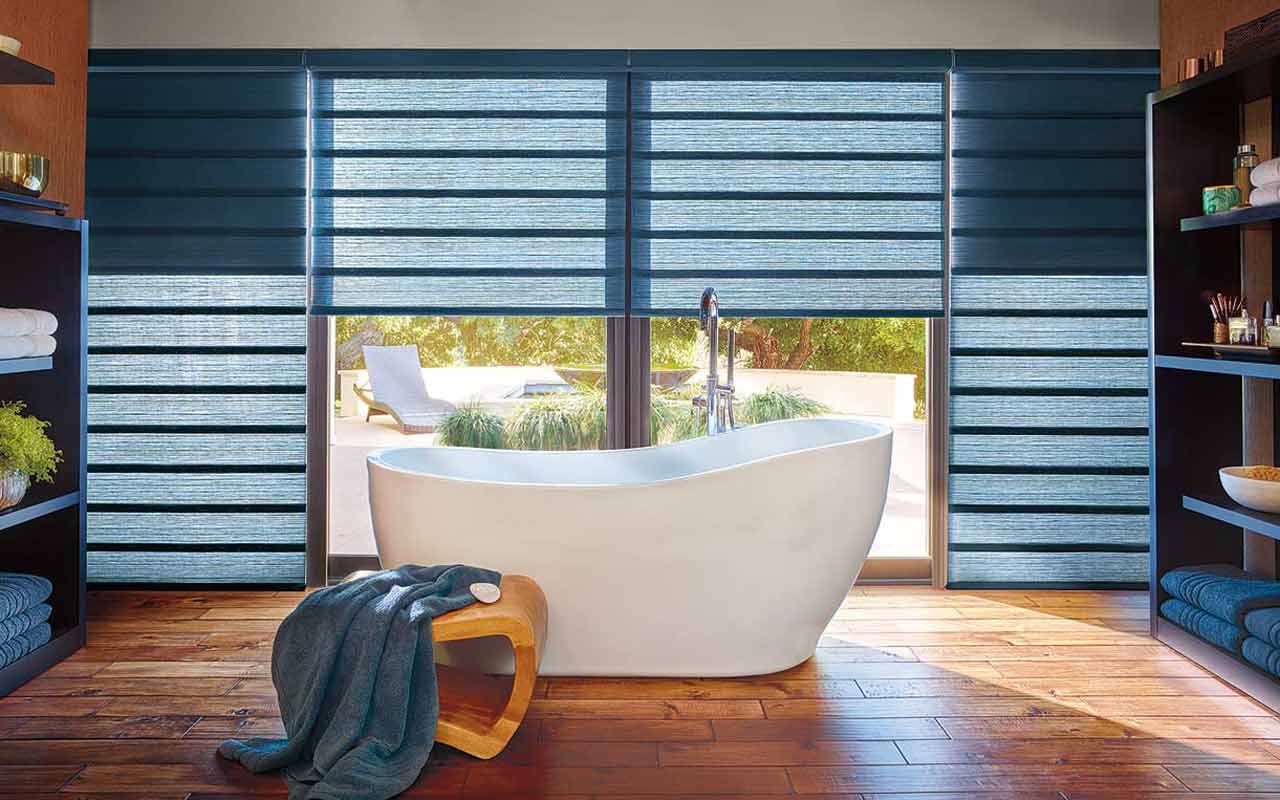
Smart Shades
- Cost: $830 to $10,000
Soon, walking over to your windows to raise or lower the shades or open the blinds will be as old-fashioned as walking over to the TV to change the channel, says Paul Kempler, of Kempler Design, in Reno, Nev. By adding motors and an automated (app-based) control system to new or existing blinds, you can program them to open or close on schedule or operate them with a remote, phone or tablet, as well as voice-controlled smart speakers such as Alexa and Google Home. Advantages include convenience, energy savings and improved security when you’re away.
With the Hunter Douglas PowerView system, for example, motorization costs $300 to $450 over the cost of new shades or blinds. With a $10,000 budget, Kempler estimates that you could outfit three to 12 windows, depending on the size of the windows and the options you choose. In new construction, the motors can be hardwired, but in a retrofit, they’re usually battery-powered. The number and type of batteries required depend on the size and weight of the shade, and Kempler says batteries typically last about a year. Somfy makes motors and control systems, and it outfits some models with rechargeable battery packs; one model, the Wirefree Solar Pack, uses solar power to recharge a lithium battery (about $150).
When shopping for motorized shades, Kempler suggests looking at manufacturers’ videos online so you can see the shades in operation and get a sense of how noisy they are. If you aren’t technically savvy, buy your system from a retailer that will provide installation as well as technical assistance.
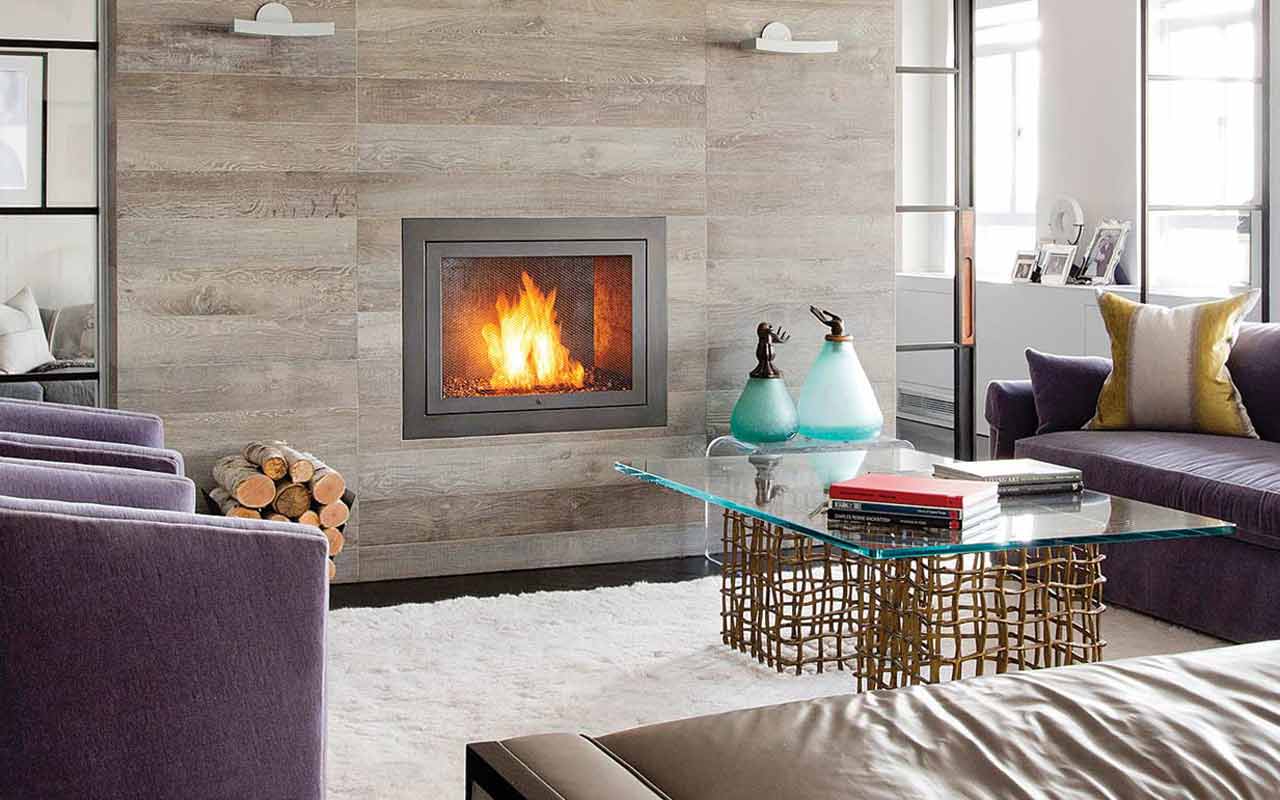
A Fireplace for Anyplace
Cost: $4,000 or More
A gel-fuel (alcohol-based) fireplace doesn’t require a chimney, flue, gas line or venting. HearthCabinet Ventless Fireplaces combine style, safety and convenience. The firebox includes insulated inner and outer walls of stainless steel, and it has a top-hinged door with steel mesh and a lock to keep anyone from accidentally touching the flame. The unit burns a recyclable fuel cartridge that lasts for up to two-and-a-half hours. The burning fuel imitates a wood fire, with large, orange flames that crackle. Burning produces a bit of warmth and negligible emissions—mostly humidity.
HearthCabinet fireplaces come in various sizes and finishes and start at $4,000. Order online or visit a HearthCabinet dealer in California, New York, New Jersey or the District of Columbia. The gel cartridges come in packages of eight ($80 for unscented, $83 for scented).

Indulge Your Inner Sommelier
- Cost: $10,000 or More
Is your wine cellar essentially a case or two in the basement? You can install climate-controlled storage that will show off your collection while keeping it at a perfect 55 degrees and 60% to 65% relative humidity. At Vigilant Inc., which crafts wine-cellar components, many clients opt for self-contained wine cabinets, starting at $12,850, that can be designed to fit into and blend with most any space. Installation runs from a few hundred dollars to a few thousand.
You can build a small cellar for $10,000 by adapting a closet or a space under a stairway and installing a cooling system, says Charlie Griffiths, Vigilant’s owner. One of his clients built a 40-by-60-inch closet to hold 355 wine bottles in a basement corner for $10,000, including a cooling system.
Design your storage using Vigilant’s DIY Wine Cellar Designer Tool (works on Windows and Android devices; Apple coming soon), or use the company’s complimentary design services. Clients who don’t want to build a cellar themselves generally hire a local contractor, and in many areas, Vigilant has representatives who will refer you to one.
Get Kiplinger Today newsletter — free
Profit and prosper with the best of Kiplinger's advice on investing, taxes, retirement, personal finance and much more. Delivered daily. Enter your email in the box and click Sign Me Up.

-
 Stock Market Today: Stocks Rise Despite Stagflation Risk
Stock Market Today: Stocks Rise Despite Stagflation RiskThe business of business continues apace on continuing hope for reduced trade-related uncertainty.
-
 Do You Want An Extra $50,000 In Your 401(k)? Delay Retiring
Do You Want An Extra $50,000 In Your 401(k)? Delay RetiringDon’t think putting off retiring for six months to a year will have a meaningful impact? Think again. See how much it can help.
-
 What to Do With Your Tax Refund: 6 Ways to Bring Growth
What to Do With Your Tax Refund: 6 Ways to Bring GrowthUse your 2024 tax refund to boost short-term or long-term financial goals by putting it in one of these six places.
-
 What Does Medicare Not Cover? Eight Things You Should Know
What Does Medicare Not Cover? Eight Things You Should KnowHealthy Living on a Budget Medicare Part A and Part B leave gaps in your healthcare coverage. But Medicare Advantage has problems, too.
-
 12 Great Places to Retire in the Midwest
12 Great Places to Retire in the MidwestPlaces to live Here are our retirement picks in the 12 midwestern states.
-
 10 Cheapest Small Towns to Live In
10 Cheapest Small Towns to Live InThe cheapest small towns might not be for everyone, but their charms can make them the best places to live for plenty of folks.
-
 Best Cold Weather Places to Retire
Best Cold Weather Places to RetirePlaces to live Some like it hot; others not so much. Here are the 12 best places to retire if you can't stand the heat.
-
 15 Reasons You'll Regret an RV in Retirement
15 Reasons You'll Regret an RV in RetirementMaking Your Money Last Here's why you might regret an RV in retirement. RV-savvy retirees talk about the downsides of spending retirement in a motorhome, travel trailer, fifth wheel or other recreational vehicle.
-
 The Cheapest Places To Retire in the US
The Cheapest Places To Retire in the USWhen you're trying to balance a fixed income with an enjoyable retirement, cost of living is a crucial factor to consider.
-
 The Six Best Places to Retire in New England
The Six Best Places to Retire in New Englandplaces to live Thinking about a move to New England for retirement? Here are the best places to land for quality of life, affordability and other criteria.
